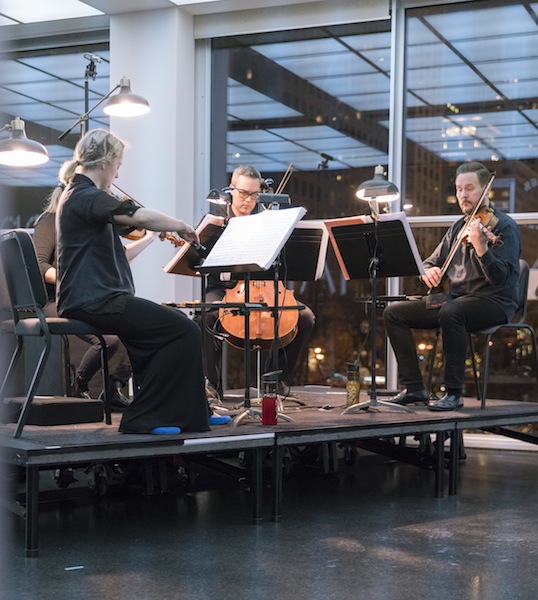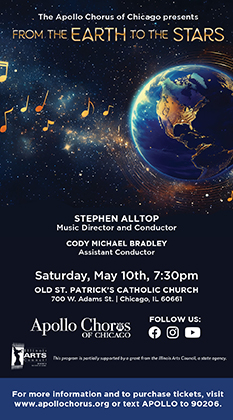Spektral Quartet brings refined artistry, impressive stamina to Feldman work

How is it that one can’t go through half of a two-hour orchestra concert without several cell phones going off and yet at a performance of a six-hour string quartet it never happens once?
The Spektral Quartet made a bit of Chicago music history Saturday night by performing the belated local premiere of Morton Feldman’s infamous String Quartet No. 2 at the Museum of Contemporary Art.
Feldman’s quartet, written in 1983, is largely renown for its six-hour duration. Live performances of this work invariably run shorter than recordings, but Spektral’s performance–playing every note–managed to shave nearly an hour off the score, clocking in at 5:09. A New York colleague and Feldman specialist who watched the Facebook Live feed—before it shut down 90 minutes in–said he had never heard a faster performance.
Of course, “fast” in the land of Feldman is a relative term. The American composer’s quartet is, like most of his music, predominantly quiet and extremely slow. Reflecting his obsession with the intricate weaving of Persian and Asian rugs, the quartet is crafted from cells–short phrases and fragments that are repeated, varied and transformed over the extended duration. There is no dramatic arc, development or climax to the music and the piece ends in midair after 124 pages of score. When the playing abruptly stopped Saturday after the five-hour mark, most of the audience seemed surprised and a bit baffled.
So, is Feldman SQ2 just an elaborate gimmick? Not at all. From the seesawing motif that opens the work–and recurs as a regular signpost throughout–the American iconoclast draws a remarkable array of sonic variety and expressive nuance from his scant material.
Just five minutes in, one is struck by the sonority he creates, which sounds uncannily like an electronic synthesizer. Highlights abound: a jaunty pizzicato theme that grows more insistent at 1:08, a sudden loud eruption of dragging chords at 1:25, a celestial bell-like chiming for the two violins (2:45), a wave-like celestial melody (4:20) and a passage of unison yearning (0:20). As the vast, flowing structure unfolds, Feldman’s music is by turns soothing, meditative, unsettling, and even ineffably beautiful.
In their first complete performance of Feldman’s quartet, the Spektral members (violinists Clara Lyon and Maeve Feinberg, violist Doyle Armbrust and cellist Russell Rolen) brought tonal refinement, focused ensemble, and a terraced array of dynamics—consistently exploring the extreme degrees of pianissimo where most of the music lives.
While Saturday’s performance was decidedly brisk by the standards of this work, the music never felt rushed and had a natural flow and spaciousness. Playing continuously for over five hours without a break, the Spektral musicians’ stamina was as impressive as their musical artistry, with remarkable concentration maintained throughout.
The event was presented as part of an ongoing MCA exhibition on Merce Cunningham, since Feldman was a close friend of the choreographer’s collaborator and longtime partner John Cage. The narrow, T-shaped 4th floor hall that served as a performance space may not have been esthetically pleasing, but it provided a clear and lightly resonant acoustic ideal for this music.
Feldman’s quartet can be nearly as much of an endurance test for audience members as the performing musicians. Yet this was one of the quietest and most attentive audiences I’ve ever experienced. Most got up from time to time to stretch, walk around or visit the 1st-floor facilities. Initially distracting, the movement soon became a kind of ad libitum visual counterpoint to the shared performance.
And while many of the initial hundred or so in attendance bailed over the course of the evening, about half were still there at the end–and rewarded by the quartet with “I ♥ Morty” headbands in an array of colors.
Posted in Performances


